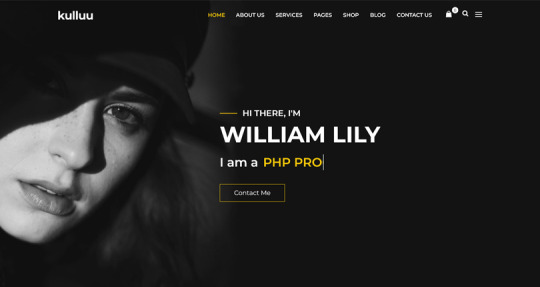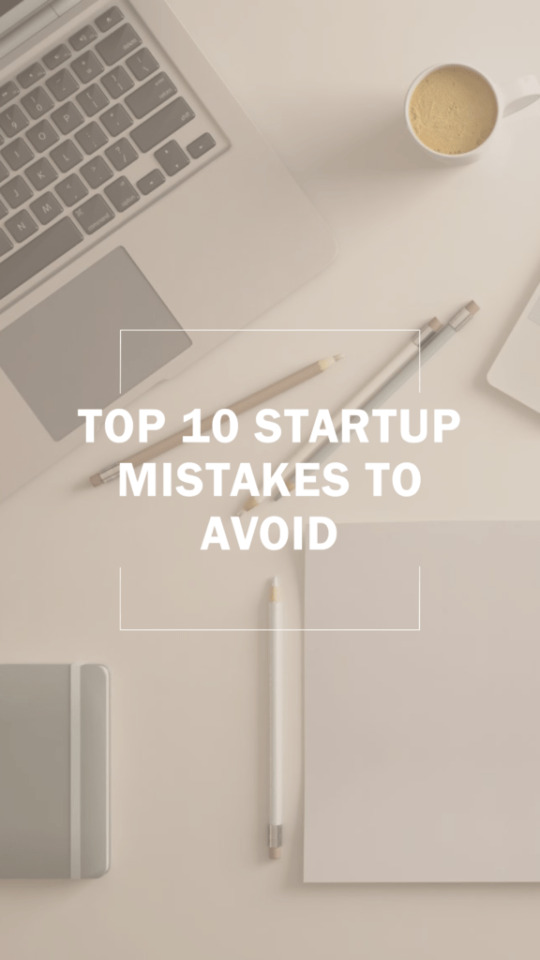#online learning wordpress theme
Text
7+ Best Art Portfolio Website WordPress Premium Theme

Art Portfolio Website WordPress Premium Theme
Creating an art portfolio website is essential for artists, designers, and creatives to showcase their work and attract potential clients. Let’s explore some of the best WordPress premium themes specifically designed for art portfolio websites:
1. Dabble – Creative Agency & Portfolio WordPress Theme:

A sophisticated and stylish theme with multiple menu layouts, sliders, and preset blog post styles.
Features a portfolio system using a custom post type, allowing you to display your projects effectively.
Available in both free and premium versions, with advanced controls in the premium version.
2. Rubrash – Personal Portfolio WordPress Theme:

Known for its rock-solid coding and fantastic support.
Offers full-width portfolio layouts, including checkerboard style and carousel options.
Utilize the drag-and-drop Elementor Builder to create stunning pages for each portfolio entry.
3. Swipy – Creative Agency WordPress Theme:

A flexible and feature-rich theme powered by the Elementor page builder plugin.
Suitable for various types of websites, including art portfolio website.
Explore its extensive library of over 300 templates for startups, freelancers, and personal sites.
4. Kulluu – Creative Agency WordPress Theme:

A minimalist freelancer and agency portfolio theme.
Ideal for showcasing your work with a clean and modern design.
5. Bionic- Personal Portfolio WordPress Theme:

Another portfolio WordPress theme that emphasizes simplicity.
Perfect for artists, photographers, and creative professionals.
6. Cretic – Creative Agency WordPress Theme:

A multi-concept artist and creative agency theme.
Offers versatility and a variety of options for different types of art portfolio website.
7. Mifo – Creative Minimal Portfolio WordPress Theme:

A clean and minimal multipurpose theme suitable for art portfolio website.
Focuses on elegant design and typography.
Remember to choose a theme that aligns with your artistic style, provides an excellent user experience, and effectively showcases your work. Happy creating! 🎨🖌️
For more options, you can explore other themes from ThemeForest. Each of these themes has unique features and customization options to suit your specific needs.
#premium wordpress themes#premium wordpress theme#app landing wordpress theme#wordpress premium themes#education wordpress theme#education & online course wordpress theme#paid wordpress themes#consulting business wordpress theme#online learning wordpress theme#wordpress plugins#art portfolio website#Art Portfolio Website WordPress Premium Theme#Creating an art portfolio website is essential for artists#designers#1. Dabble – Creative Agency & Portfolio WordPress Theme:#A sophisticated and stylish theme with multiple menu layouts#sliders#and preset blog post styles.#Features a portfolio system using a custom post type#allowing you to display your projects effectively.#Available in both free and premium versions#with advanced controls in the premium version.#2. Rubrash – Personal Portfolio WordPress Theme:#rubash#Known for its rock-solid coding and fantastic support.#Offers full-width portfolio layouts#including checkerboard style and carousel options.#Utilize the drag-and-drop Elementor Builder to create stunning pages for each portfolio entry.#3. Swipy – Creative Agency WordPress Theme:#swipy
2 notes
·
View notes
Text
WordPress Themes
If you havent checked out the MonsterInsights blog its worth adding to your favorites bar. There are lots of great articles to get you started with everything web design related.
Following up from my previous post on WordPress.org I did a little research on some of the best themes and custimisation options for your WordPress site.
Have a read for yourself and let me know what you think?
#webdevelopment#WordPress#wordpress community#wordpress plugins#wordpress websites#blogger#online learning#MonsterInsights#wordpress themes
0 notes
Text

#WordPress Services: WordPress SEO | Get found easily online with search engine optimization services | Learn More at https://ecom1stclass.c#Ecom1stclass.Com; WORDPRESS; WordPress SEO; Website Design; Landing Page; WORDPRESS; Woocommerce Store; WORDPRESS Problem; Fix WordPress Is#ecom1stclass#WORDPRESS#Wordpressblog#Wordpressdesign#Theme#Wordpressdeveloper#Plugin#SEO
1 note
·
View note
Text
What are the ways of structuring plans?
Deep Knowledge acquisition is a must to learn, fulfilling all the strategies. How this works in Digital Marketing.
Let me walk through the ideas of working with your strategy, and engaging with all the tools and keywords in phrasing your Digital marketing strategy.
First, tell me how will you find a structured way of planning your ideas. Don't worry!! I will guide you and help you to take forward your first step of planning.
Planning is a lot of work to do but working with a structure always helps to finalise the goals you want to achieve through Digital Marketing.
Acquisition, testing and then resulting is the outcome and with proper planning, these outcome becomes a power to grow with your business or startups. Read more for learning about varied segments of Digital Marketing.
#digital marekting#how to learn digital marketing#digitalmarketingtips#best digital marketing strategy#digital marketing course#safalta#safalta.com#content marketing#content management services#best wordpress plugins#best wordpress themes#free online course
0 notes
Note
Hey Krad, do you have any advice for starting a website like yours? I love the idea of starting a website to host my fandom and personal portfolio, and maybe get back a piece of the old internet. How did you put yours together?
hey there! great question, and the good news is there's a lot of ways to go about it.
the bad news is, there's a lot of ways to go about it.
to simplify things, there's kind of ... three "tiers" to the back-end of how to create a website. let's break it down below.
high ease, low customization. (wix, weebly, squarespace, etc. you pay a company + they give you a bunch of themes and pre-made pages for you to drop images in.) can have one of these online in 2-3 hours, but it often "feels" templated and sterile.
medium ease, medium customization. (making a theme from scrach with tumblr's custom code editor, hybrid sites with some pages in pure code, some with wordpress grafted onto some subdomains). this is what i'd classify my site as, as I use wordpress for my logs for brainless updating. while i'm confident coding single/static pages, i just don't have the time or brainwidth right now to make a complex archiving system.
low ease, high customization. (neocities, pure html/css/coding). the downsides to this is oftentimes these sites are not phone-friendly, and there's a steep learning curve. but for the quintessential "old internet" experience, by far the best route to take. there's also something really empowering about learning why things work the way they do.)
some of this can be super intimidating if you're starting from 0 coding knowledge; there's no shame in switching to a templating software. hell i started with weebly and dicking around in tumblr's custom code template for a solid 5 years before making my current site, and that was with a previous 5 years of sketchy html experience) you're not gonna learn everything overnight.
but! as long as you keep a curious and inquisitive mind, you can't go wrong.
one last encouragement: there's kind of a mini renaissance with custom sites right now, especially in neocities circles, so you're kinda in luck in that there's more resources than ever. i love scumsuck's guides, and fancoders (the community) is also all over this too.
good luck!
57 notes
·
View notes
Text
The Evolution of PHP: Shaping the Web Development Landscape
In the dynamic world of web development, PHP has emerged as a true cornerstone, shaping the digital landscape over the years. As an open-source, server-side scripting language, PHP has played a pivotal role in enabling developers to create interactive and dynamic websites. Let's take a journey through time to explore how PHP has left an indelible mark on web development.
1. The Birth of PHP (1994)
PHP (Hypertext Preprocessor) came into being in 1994, thanks to Rasmus Lerdorf. Initially, it was a simple set of Common Gateway Interface (CGI) binaries used for tracking visits to his online resume. However, Lerdorf soon recognized its potential for web development, and PHP evolved into a full-fledged scripting language.
2. PHP's Role in the Dynamic Web (Late '90s to Early 2000s)
In the late '90s and early 2000s, PHP began to gain prominence due to its ability to generate dynamic web content. Unlike static HTML, PHP allowed developers to create web pages that could interact with databases, process forms, and provide personalized content to users. This shift towards dynamic websites revolutionized the web development landscape.
3. The Rise of PHP Frameworks (2000s)
As PHP continued to grow in popularity, developers sought ways to streamline and standardize their development processes. This led to the emergence of PHP frameworks like Laravel, Symfony, and CodeIgniter. These frameworks provided structured, reusable code and a wide range of pre-built functionalities, significantly accelerating the development of web applications.
4. PHP and Content Management Systems (CMS) (Early 2000s)
Content Management Systems, such as WordPress, Joomla, and Drupal, rely heavily on PHP. These systems allow users to create and manage websites with ease. PHP's flexibility and extensibility make it the backbone of numerous plugins, themes, and customization options for CMS platforms.
5. E-Commerce and PHP (2000s to Present)
PHP has played a pivotal role in the growth of e-commerce. Platforms like Magento, WooCommerce (built on top of WordPress), and OpenCart are powered by PHP. These platforms provide robust solutions for online retailers, allowing them to create and manage online stores efficiently.
6. PHP's Contribution to Server-Side Scripting (Throughout)
PHP is renowned for its server-side scripting capabilities. It allows web servers to process requests and deliver dynamic content to users' browsers. This server-side scripting is essential for applications that require user authentication, data processing, and real-time interactions.
7. PHP's Ongoing Evolution (Throughout)
PHP has not rested on its laurels. It continues to evolve with each new version, introducing enhanced features, better performance, and improved security. PHP 7, for instance, brought significant speed improvements and reduced memory consumption, making it more efficient and appealing to developers.
8. PHP in the Modern Web (Present)
Today, PHP remains a key player in the web development landscape. It is the foundation of countless websites, applications, and systems. From popular social media platforms to e-commerce giants, PHP continues to power a significant portion of the internet.
9. The PHP Community (Throughout)
One of PHP's strengths is its vibrant and active community. Developers worldwide contribute to its growth by creating libraries, extensions, and documentation. The PHP community fosters knowledge sharing, making it easier for developers to learn and improve their skills.
10. The Future of PHP (Ongoing)
As web technologies continue to evolve, PHP adapts to meet new challenges. Its role in serverless computing, microservices architecture, and cloud-native applications is steadily increasing. The future holds exciting possibilities for PHP in the ever-evolving web development landscape.
In conclusion, PHP's historical journey is interwoven with the evolution of web development itself. From its humble beginnings to its current status as a web development powerhouse, PHP has not only shaped but also continues to influence the internet as we know it. Its versatility, community support, and ongoing evolution ensure that PHP will remain a vital force in web development for years to come.
youtube
#PHP#WebDevelopment#WebDev#Programming#ServerSide#ScriptingLanguage#PHPFrameworks#CMS#ECommerce#WebApplications#PHPCommunity#OpenSource#Technology#Evolution#DigitalLandscape#WebTech#Coding#Youtube
17 notes
·
View notes
Text
Education WordPress theme - Create, publish and sell courses online, a complete courses and learning website builder powered by drag and drop page builder for creating school/university/academic/college websites https://visualmodo.com/theme/education-wordpress-theme/
🎓💼💻📱📚📖
education #courses #learning #theme #wordpress #responsive #academic #templates #webdesign #webdevelopment #plugins
2 notes
·
View notes
Text
From Zero to Hero: Building Your First Affiliate Blog from Scratch

Alright, fellas, strap in because today we're diving deep into the world of affiliate blogging. We're talking about going from absolutely nothing to being the hero of your own online success story. It's time to build your first affiliate blog from scratch and carve out your slice of the digital pie.
So, where do you start on this epic journey? Well, first things first, you need a game plan. You can't just dive in blindly and hope for the best. Take a moment to map out your vision for your blog. What niche are you passionate about? What products or services do you want to promote? Get crystal clear on your goals because clarity is key to success.
Once you've got your vision locked in, it's time to get technical. Don't worry, you don't need to be a coding whiz to build a killer blog. Platforms like WordPress make it easy for even the tech-challenged among us to create professional-looking websites. Choose a clean, user-friendly theme and start customizing to make it your own.
Now, onto the fun part: content creation. This is where you really get to flex your creative muscles and showcase your expertise in your chosen niche. Whether you're into fitness, finance, or fashion, there's an audience out there hungry for your knowledge. Start brainstorming topics that will resonate with your target audience and get to writing.
But hold up, bro, before you hit publish on that first blog post, there's one crucial step you can't skip: keyword research. This is how you'll ensure your content gets seen by the right people. Use tools like Google Keyword Planner or SEMrush to identify high-volume, low-competition keywords related to your niche. Sprinkle these keywords strategically throughout your content to boost your blog's visibility in search engine results.
With your content live and kicking, it's time to start promoting like a madman. Share your blog posts on social media, join relevant online communities, and reach out to influencers in your niche for collaborations. The more eyeballs you can get on your content, the better chance you have of driving traffic and, ultimately, making those sweet affiliate commissions.
Speaking of affiliate commissions, let's talk monetization. This is where the magic happens, my friends. Sign up for affiliate programs relevant to your niche and start embedding those affiliate links into your blog posts. But here's the golden rule: only promote products or services you genuinely believe in. Your audience can smell a sellout from a mile away, so stay authentic and only endorse stuff you'd actually use yourself.
Now, I know what you're thinking: "But bro, how long until I start seeing some serious cash flow?" Here's the truth, my friend: Rome wasn't built in a day, and neither is a successful affiliate blog. It takes time, dedication, and a whole lot of hustle to make it in this game. But if you stay consistent, keep learning, and never lose sight of your goals, you'll be well on your way to affiliate marketing glory.
So there you have it, guys. Building your first affiliate blog from scratch might seem daunting at first, but trust me when I say it's worth the grind. Follow these steps, stay true to yourself, and before you know it, you'll be the hero of your own online success story. Now get out there and start hustling!
3 notes
·
View notes
Text
5 Key SEO Trends for 2024: Actionable Insights for WordPress SEO Managers
As we approach 2024, the SEO landscape continues to evolve, presenting new challenges and opportunities for SEO managers, particularly those working with WordPress websites. Keeping abreast of the latest trends is essential.
We’ve been reading blogs, news and watching conferences and we thought this would be useful for any SEOs working with Wordpress.
So, here are five key SEO trends for 2024, accompanied by practical insights tailored for your needs.
1. Embracing AI in SEO Strategy
Trend Insight: Artificial Intelligence (AI) is revolutionising SEO strategies. From content creation to understanding user intent, AI tools are becoming indispensable. Action for WordPress Managers:
Utilise AI-powered SEO plugins to optimise content for search intent and keyword relevance.
Employ AI tools for content analysis, ensuring it aligns with user queries and intent.
Use AI for automated site audits to identify and rectify SEO issues efficiently.
2. Search Experience Optimisation (SXO)
Trend Insight: Google’s shift towards evaluating the overall helpfulness of a website means Search Experience Optimisation (SXO) is more crucial than ever. Action for WordPress Managers:
Focus on user experience (UX) elements like site speed, mobile responsiveness, and intuitive navigation.
Utilise WordPress themes and plugins that are optimised for speed and user experience.
Regularly update content to keep it relevant, engaging, and helpful to your audience.
3. Content Authenticity and Expertise
Trend Insight: Google's emphasis on E-E-A-T (Expertise, Experience, Authoritativeness, and Trustworthiness) underscores the need for content authenticity and expertise. Action for WordPress Managers:
Prioritise original, well-researched content that showcases expertise in your niche.
Encourage subject matter experts to contribute or review your content.
Use author bio plugins to highlight the credentials of content creators.
4. Structured Data and Schema Markup
Trend Insight: Structured data is increasingly important for helping search engines understand and index your content more effectively. Action for WordPress Managers:
Implement schema markup on your site using WordPress plugins like Yoast SEO or Schema Pro.
Use structured data to highlight key information like products, reviews, and FAQs.
Regularly check Google’s updates on schema requirements and adjust your site’s markup accordingly.
5. Voice Search Optimisation
Trend Insight: The rise of voice assistants and voice search necessitates adapting content for conversational queries. Action for WordPress Managers:
Optimise content for natural language and conversational queries.
Include long-tail keywords that mirror how people speak.
Ensure your local SEO is robust, as many voice searches are local in nature.
By keeping informed and adapting to these trends, SEO managers can ensure their WordPress sites not only keep pace but lead in the competitive online environment of 2024. Remember, SEO is a dynamic field; continuous learning and adaptation are key to success.
We hope this helps!
Merry Christmas from us to you!
5 notes
·
View notes
Text
How to Start a Blog: A Satire
Hi, over the past week and a half I’ve been on a blog kick, or rather a “I want to start a blog because I have no creative outlet” kick. What I learned is that designing a blog, or any website for that matter, is incredibly difficult and very frustrating. So, I have taken it upon myself to make a how to guide on creating a blog. It’ll be fun, c'mon let’s go!
Step 1: Realize you want to start a blog even though you’ve never shown that much interest in writing because all you’ve ever written were school essays, but you convince yourself you did good on those essays, hence why you should start a blog. (extra points if you realize this on your way home from the beach)
Step 2: Decide on a blog platform! There are numerous websites where you can house your blog, the trick is picking one. Wix is good, if you want your blog header to look deformed on mobile even though it looks *perfect* on desktop. Another popular site is WordPress, unless you have a degree in designing websites, you’re basically screwed. Or maybe I just wasn’t blessed with the website design genes in my family. Thanks mom. Weebly is that one you had to make a power point on in your 7th grade English class and since then it’s just left a bad taste in your mouth. There’s several others but I think whoever coded them watched The Social Network one time and decided they wanted to be the new Mark Zuckerberg. Anyways, step 3 anybody?
Step 3: Time to pick a theme *insert random aesthetic emojis here because my HP laptop has the worst emojis I have EVER seen* Depending on what you want to focus your blog on will be the deciding factor on your theme. Are you a gamer? Choose a color palette that has lots of purples, blues, and neon colors. But are you narrowing it down to a certain video game? Use the games colors in your blog. A beauty blog you say? Pink, white, and lots of light colors, possibly some pastels if you’re feeling spontaneous.
Step 4: The time has come to decide between designing your blog from scratch OR picking a premade template that looks awesome but when you try to edit it to match your theme it looks worse than if you had started from scratch.
Step 5: Put all the decisions you made to work! Now absolutely forget about everything except your theme because all you will focus on for days is making the header look like God hand crafted it himself. You will fail many times but that’s okay, just get back up on the horse and convince yourself to come back to it later. Work on the layout, how is the home page going to look? What pictures do you want to use? Do you need to go find aesthetic stuff of Pinterest to make your blog look better because the only pictures good enough to be online are your graduation pictures and the pictures of your dog that your mom sends you to combat your anxiety, I mean pet pictures are cute yes put them on the blog, in fact make it a blog ABOUT your pet. I guarantee more people will read it if you do that. Can we go to step 6 now please?
Step 6: This step is personally my least favorite and takes the longest. You will bounce between steps 2, 3, 4, and 5 because you aren’t satisfied with anything you have created so far :)
Step 7: Complain about it to your friend in which she asks you, “Is it worth it?” and you respond with the truth that its probably not worth it but you need a creative outlet and have convinced yourself that you aren’t good at anything else.
Step 8: You’re tired aren’t you? That’s okay, let’s take a break. How was your day? Did you do anything fun? Oh you didn’t leave your house because you’ve been trying to make a blog all day. Yeah that happens, but that’s why we’re taking a break now! Go drink some water, eat a sandwich, don’t get on social media though, you’ll never come back to read the rest of my how to guide.
Step 9: You have finally handcrafted something that kind of looks like a blog, this is the part where you realize you set your design expectations too high and you’re actually really liking the simple, minimalistic vibe that you’ve somehow created. Now step 9 is making your domain name, which is the URL people will go to when they want to visit your blog. Coming up with a domain name is like making a new password. Everything you think of has already been used. The issue is you can’t make Ilovetaylorswift123! your domain name... (for clarification that is not my real password, I made that up in like three seconds.) This step is a two parter because I’m feeling chaotic today. As you are getting frustrated about not being able to come up with a good domain name, you realize that the blog platform you used that said you’d get a free domain name, is only half true because somehow, someway, you will be paying for this gosh darn blog- both with money and your sanity.
Step 10: Congratulations, you’ve made it, here’s your trophy in the form of what was supposed to be my first blog post but after claiming that I will in fact not be paying their absurd prices, I came to my early high school second home- Tumblr. One blog platform I didn’t mention in step 2 was Tumblr and there’s a reason for that. It’s not necessarily a traditional platform for a blog and readers have to have an account with Tumblr so when you share the link to your friends, a cute little box pops up that says “Ah, now. You need clearance for that.” and asks them to make an account. Which makes sense because Tumblr IS a social media platform so no hate to them for that.
In conclusion, (because like I said, I have convinced myself I was very good at school essays) making a blog is hard and not for the faint of heart. You’ll need a solid plan, knowledge on how to use the blog platform you’ve chosen, and money for the domain name. But if you’re like me and don’t have any of those, that’s okay! Because there will always be somewhere for you to share your writings, your passions, and your truths.
Have a good day, friends <3
11 notes
·
View notes
Text

#_What_is_the_purpose_of_this_website?
I do not have direct access to your current browsing session or the website you are pertaining to. still, I can generally explain that websites serve colorful purposes depending on their content and functionality. Websites can be created for purposes similar as
instructional numerous websites are designed to give information about a particular content, company, product, service, or event. These spots aim to educate and inform callers.
E-commerce Online stores or commerce allow druggies to browse and buy products or services directly from the website.
Entertainment Some websites are meant for entertainment, including streaming vids, playing games, and participating creative content like artwork or music.
Social Networking Social media platforms grease commerce and communication between individualities, enabling them to connect, partake content, and communicate in colorful ways.
Blogging Blogs are platforms where individualities or groups can partake their studies, opinions, and moxie on specific motifs.
Educational Educational websites offer courses, tutorials, and coffers to help druggies learn about a particular subject or skill.
News and Media News websites give current events, papers, vids, and other forms of news and media content.
Commercial numerous companies have websites to show their products, services, and company information. These spots can also serve as a point of contact for guests.
Portfolio individualities in creative fields, similar as artists, contrivers, and shutterbugs, frequently use websites to show their work.
Government and Institutions Government agencies, educational institutions, and other associations use websites to partake information, give services, and interact with the public.
Non-profit and Advocacy on-profit associations frequently use websites to raise mindfulness about their causes, share information, and gather support.
particular Some individualities produce particular websites to partake their gests , pursuits, and interests.
The specific purpose of a website depends on its content, design, and the pretensions of its creators. However, you might want to look for an" About" or" Purpose" section on the point to get further information about its intended function, If you are pertaining to a particular website.
If you want to buy a website domain hosting to setup google top ranking and customize WordPress theme then sure you can contact me thanks
Gmail: [email protected]
4 notes
·
View notes
Text
Which actions are necessary to make a website?
Creating a website involves several steps, and the process can vary based on your specific needs and technical expertise. Here's a general guide to help you get started:
Define Your Purpose and Goals: Clearly define the purpose of your website. Identify your target audience. Set specific goals for your website.
Choose a Domain Name: Pick a unique and memorable domain name that reflects your brand or content. Choose a domain extension (e.g., .com, .org, .net).
Select a Web Hosting Provider: Choose a reliable web hosting provider that suits your needs and budget. Consider factors like performance, support, and scalability.
Plan Your Website Structure: Create a sitemap outlining the structure of your website. Plan the main navigation and organization of content.
Select a Content Management System (CMS): Choose a CMS like WordPress to manage your website's content. WordPress is a popular choice for beginners due to its ease of use.
Design Your Website: Select a responsive and visually appealing website theme or template. Customize the design to match your brand using the CMS's customization options.
Create and Organize Content: Write and organize the content for your website. Ensure your content is engaging, informative, and optimized for search engines.
Integrate Essential Features: Add necessary features such as contact forms, social media integration, and analytics. Install any plugins or extensions required for additional functionality.
Optimize for SEO: Optimize your website for search engines by using relevant keywords and meta tags. Create a robots.txt file and sitemap.xml to help search engine crawlers navigate your site.
Test Your Website: Test your website's functionality across different browsers and devices. Ensure that all links work, forms are submitted correctly, and pages load quickly.
Launch Your Website: Register your domain and set up hosting. Point your domain to your hosting provider. Launch your website to make it accessible to the public.
Promote Your Website: Share your website on social media. Implement an online marketing strategy to drive traffic. Consider paid advertising if it aligns with your goals.
Monitor and Update: Regularly update your content to keep it fresh. Monitor website analytics to understand visitor behavior. Make updates and improvements based on user feedback and analytics.
Remember, this is a simplified overview, and the specific steps may vary depending on your technical expertise and the complexity of your website. If you're new to website creation, platforms like WordPress often provide user-friendly interfaces and extensive documentation to help you through the process. You can buy WordPress Premium Theme to easily design your website.
#premium wordpress themes#premium wordpress theme#wordpress premium themes#app landing wordpress theme#education wordpress theme#consulting business wordpress theme#paid wordpress themes#education & online course wordpress theme#wordpress plugins#online learning wordpress theme#best business theme wordpress#business#business growth#finance#management#entrepreneur#marketing#business consulting wordpress themes#lethal company#limbus company#seo company#digital marketing company#good smile company#services#apple#site#development#best wordpress theme for medical website#webdevelopment#website
4 notes
·
View notes
Text
How to Turn Your Online Business Dreams into Reality


Introduction: The Digital Frontier of Entrepreneurship
Selecting a Niche and Business Model: The Foundation of Success
Building Your Online Platform and Brand: Your Digital Headquarters
Creating High-Demand Products and Services: Delivering Value to Your Audience
Implementing Effective Marketing Strategies: Attracting Targeted Traffic
Diversifying Revenue Streams for Maximum Profits: Building Financial Stability
Optimizing for Maximum Profitability Long-Term: Building a Sustainable Business
Conclusion: Turning Dreams into Reality
True successful story
Introduction: The Digital Frontier of Entrepreneurship
In today's digital age, the rise of the internet and technology has revolutionized the way we do business. It has opened a world of opportunities for entrepreneurs to start and run their own businesses online. Online businesses offer flexibility, scalability, and the potential for global reach. This comprehensive guide will provide you with a step-by-step framework for building a profitable online business from the ground up. Whether you want to start a side business or build a full-time online empire, follow this ultimate guide to turn your idea into a thriving, sustainable online business. With focus, grit, and commitment to continuous improvement, you can build the profitable online business of your dreams.
Selecting a Niche and Business Model: The Foundation of Success
The foundation of every successful online business is choosing a profitable, in-demand niche and a business model tailored to your goals. Select a niche you're passionate about; this will make creating content a breeze. Conduct thorough keyword research to assess search volume and demand. Join relevant online communities to connect with your audience and understand their needs. Evaluate direct competitors in the niche and aim for less saturated niches or unique angles. Consider affiliate marketing potential, as some niches offer higher commissions. Assess opportunities to create multiple products and monetize in diverse ways. Examples of popular online business niches include health, fitness, personal finance, pet care, tech, travel, content marketing, home design, spirituality, language learning, and more.
Choose a business model that complements your niche and provides multiple income stream opportunities. Many successful online businesses incorporate 3-4 monetization models. Some of the best online business models to consider include:
1. Blogging: Make money with display ads, affiliates, and branded products.
2. Online Courses: Sell your knowledge and expertise as courses.
3. Dropshipping: Curate and sell products without inventory.
4. Affiliate Marketing: Earn commissions promoting other companies' products.
5. Information Products: Sell online books, templates, checklists, and more.
6. Virtual Services: Provide consulting, freelancing, coaching, or other services.
7. Subscription Membership Site: Offer exclusive content or tools for a monthly fee.
8. E-commerce Store: Sell physical products, merchandising, and more.
Your choice should complement your niche and offer multiple income streams. Many successful online businesses incorporate 3-4 monetization models.
Building Your Online Platform and Brand: Your Digital Headquarters
Your website or blog will serve as the headquarters for your online business. Invest time upfront in creating an optimized, professional-looking platform. Purchase a domain name that matches your brand, ideally a .com if available. Select reliable web hosting with optimal speed and uptime. Install WordPress or ecommerce platforms like Shopify or WooCommerce. Design an on-brand, mobile-responsive theme that conveys your style. Include essential pages like Home, About, Contact, Services, Blog, and Shop. Set up email marketing and analytics to capture leads and track traffic data. Create visually branded assets such as logos, color palettes, fonts, and graphics. Ensure a cohesive user experience across all touchpoints. If you lack web development skills, consider hiring a freelance designer to bring your vision to life. Continually optimize your website for higher traffic, leads, and sales over time. This includes technical enhancements, user experience improvements, and page speed optimizations.
Creating High-Demand Products and Services: Delivering Value to Your Audience
The key to running a profitable online business is consistently creating products and services that deliver extreme value to your audience. Popular digital products you can create include online courses, eBooks, guides, checklists, software, premium memberships, virtual events, video tutorials, templates, and more. When brainstorming products, look for opportunities to simplify lives, save time, educate, entertain, or improve outcomes for your target customers. Leverage your expertise and tap into the skills of others to create premium offerings.
High-value services like consulting, freelancing, coaching, and more can also be extremely lucrative. Promote your services through your website and social platforms. Structure your offerings to passively earn income over time, such as online courses that continually generate sales vs. 1-on-1 services that require ongoing effort. Deliver an excellent user experience across your products and relentlessly optimize based on feedback to foster raving fans who refer others.

Implementing Effective Marketing Strategies: Attracting Targeted Traffic
Once your online platform and offerings are ready, it's time to start attracting targeted traffic using proven marketing tactics. A diverse marketing mix is key. Some of the top strategies include:
1. Content Marketing: Create engaging blog posts, videos, and visual content.
2. SEO: Optimize your website for search engines through on-page optimization and link-building.
3. PPC Ads: Utilize platforms like Google, Facebook, Instagram, and YouTube for pay-per-click advertising.
4. Email Marketing: Build your email list with lead magnets, newsletters, and automation.
5. Social Media Marketing: Employ organic and paid tactics to engage your audience.
6. Affiliate Marketing: Recruit others to promote your products and earn commissions.
7. Influencer Partnerships: Collaborate with relevant influencers in your niche.
8. Live Events: Host local meetups or virtual events to connect with your audience.
9. Podcast Guest Appearances: Grow your authority and reach new audiences.
10. Retargeting Ads: Remarket to previous site visitors across the web.
Start by focusing on 1-3 core channels, then expand your efforts over time. Pay-per-click and social ads can help quickly scale an audience, while SEO and content creation tend to be most cost-effective in the long-term. Leverage tools like Google Analytics, Facebook Business Suite, and landing page builders to optimize results across all campaigns. Don't hesitate to enlist help from digital marketing agencies and specialists.
Diversifying Revenue Streams for Maximum Profits: Building Financial Stability
Generating multiple streams of revenue is key for building a highly profitable online business. Diversification reduces risk and provides stability as each income channel goes through ups and downs. Here are some of the most lucrative online business revenue models:
1. Product/Service Sales: Your core monetization stream. Ensure competitive yet profitable pricing.
2. Advertising: Display ads, sponsorships, native advertising, etc. Set up Google Ad Manager.
3. Affiliate Marketing: Promote other company's products for commissions. Join affiliate networks.
4. Memberships/Subscriptions: Offer exclusive benefits, content, or tools for a monthly fee.
5. Events: Sell tickets for online or in-person events and training programs.
6. Dropshipping: Curate and sell products without holding inventory.
7. Physical Merchandise: Sell branded products with print-on-demand services.
8. Consulting/Freelancing: Sell your skills and expertise through 1-on-1 services.
9. Tip Jars/Donations: Allow fans to tip or donate to show support.
Aim to generate income from both active efforts like service packages and passive streams like online courses that earn as you sleep. Automate processes wherever possible to scale income without increasing workload proportionally. Reinvest profits back into growing your business and diversifying income channels to create an unstoppable snowball effect over time.



Optimizing for Maximum Profitability Long-Term: Building a Sustainable Business
Launching a profitable online business is an important first step. However, creating systems and processes that enable high profitability long-term is vital for sustaining growth. Here are some best practices for optimizing operations and profitability:
- Obsessively track KPIs and metrics for all marketing channels and funnels. Analyze data to optimize underperforming areas.
- Create excellent customer support systems. Provide prompt, personalized support to increase satisfaction and referrals.
- Automate repetitive tasks wherever possible with tools like Zapier. Automate lead collection, customer onboarding, analytics, inventory management, etc.
- Systematize your product creation process to quickly test and validate new product ideas, then scale those that resonate.
- Document your systems and processes so future hires can replicate them. This includes SOPs for customer service, product fulfillment, etc.
- Build a skilled team over time by hiring virtual assistants, freelancers, agencies, and eventually full-time employees. Focus on higher-level strategy.
- Maintain work-life balance as a long-term entrepreneur. Make time for adequate rest, leisure, and self-care to avoid burnout.
By staying agile, embracing innovation, and relentlessly providing value to your audience, you can build an online business that delivers meaningful income for decades to come.



Conclusion: Turning Dreams into Reality
Starting and running a profitable online business takes consistent effort and persistence. However, by zeroing in on a niche, selecting the right model, crafting high-value offerings, implementing diverse marketing strategies, diversifying your revenue streams, and optimizing for maximum efficiency, you can build an online business that provides freedom and fulfillment for years to come. Remember to stay obsessively focused on understanding and serving your target audience. Combine your passion with grit, resilience, and creativity. With the right mindset and business foundations in place, you have immense potential to build a thriving online business that stands out and makes a lasting impact. The time to stop dreaming and start taking action is now. Follow this comprehensive guide to turn your online business idea into reality, step-by-step. You can build an online empire that allows you to live life on your terms. The possibilities are truly endless if you commit to continuous learning and improvement. Let this guide spark the fire within and set you on the path to online business success. Start pursuing your online entrepreneur dream today.


True successful story
To illustrate the principles and strategies discussed in this comprehensive guide, let's delve into the inspiring true story of Pat Flynn and his online business, Smart Passive Income.
Smart Passive Income - About Pat Flynn
Background:
Pat Flynn was once an aspiring architect who unexpectedly found himself laid off during the economic downturn in 2008. Faced with uncertainty, he turned to the online world to seek alternative income sources. His journey began with a blog, which he aptly named Smart Passive Income (SPI).
Selecting a Niche and Business Model:
Pat recognized that there was a significant demand for information about creating online businesses and generating passive income. He was passionate about sharing his experiences, both successes and failures, and helping others navigate the world of online entrepreneurship. Pat's chosen niche was personal finance, but his business model extended beyond blogging.
Building Your Online Platform and Brand:
Pat invested in creating a professional-looking platform for SPI. He purchased a domain name, set up reliable web hosting, and designed an appealing website. His commitment to providing value was evident through the content he produced on his blog, podcast, and YouTube channel. His brand, Smart Passive Income, became synonymous with transparency, authenticity, and actionable advice.
Creating High-Demand Products and Services:
One of Pat's significant successes came from his creation of online courses and informational products. He developed courses on topics like email marketing, affiliate marketing, and podcasting, leveraging his expertise and audience trust. These products delivered immense value to his audience and contributed significantly to his income.
Implementing Effective Marketing Strategies:
Pat's marketing strategy was built on content marketing, podcasting, and email marketing. He consistently produced high-quality blog posts and podcasts, which not only attracted a dedicated audience but also positioned him as an industry expert. His email list grew as he offered valuable lead magnets and nurtured his subscribers.
Diversifying Revenue Streams for Maximum Profits:
Pat's income streams diversified over time. In addition to course sales, he earned from affiliate marketing, book sales, and speaking engagements. He also ventured into software development, creating tools like the Smart Podcast Player. This diversification provided stability and mitigated risk.
Optimizing for Maximum Profitability Long-Term:
Pat was relentless in optimizing his operations. He regularly analyzed data and user feedback to improve his products and content. His team expanded as the business grew, allowing him to focus on strategic decision-making. Pat prioritized work-life balance, emphasizing family and well-being.
Conclusion:
Pat Flynn's journey from unexpected job loss to the creation of a successful online business, Smart Passive Income, serves as an inspiring real-life example of the principles discussed in this guide. His dedication to providing value, commitment to continuous improvement, and willingness to diversify income streams are key takeaways for anyone aspiring to build a thriving online business. Pat's story reminds us that with the right mindset and a clear vision, online entrepreneurship can lead to a fulfilling and prosperous career.


Read the full article
#business-model#guide#marketing#niche#online-business#products#profitability#revenue#services#Success
4 notes
·
View notes
Text
WordPress Themes and Plugin Development
Unlocking Endless Possibilities
WordPress, the world's leading content management system (CMS), owes much of its popularity to its incredible flexibility and extensibility. At the heart of this versatility lies the realm of WordPress themes and plugin development, which empower users to customize their websites and add powerful functionality. In this article, we'll explore the fascinating world of WordPress themes and plugin development, and how they can revolutionize your online presence.
WordPress themes are the visual and functional frameworks that determine the look and feel of a website. They provide the structure, layout, and design elements that make your website visually appealing and user-friendly. Whether you're building a blog, an e-commerce store, or a corporate website, there's a vast array of themes available to suit your needs. From minimalist and modern designs to bold and vibrant layouts, the options are endless. Themes can be easily customized using the WordPress Customizer, allowing you to personalize colors, fonts, and other visual elements to match your brand identity.

However, sometimes the available themes might not offer the exact features or functionality you require. This is where plugins come into play. WordPress plugins are software components that enhance the core functionality of your website. They can add features like contact forms, social media integration, search engine optimization, security measures, and much more. The WordPress plugin repository offers a vast library of free and premium plugins catering to various needs. If you can't find a plugin that suits your requirements, you can even develop your own custom plugins to meet your unique needs.
WordPress themes and plugin development offer endless possibilities for customization. If you have coding knowledge, you can dive into the world of PHP, HTML, CSS, and JavaScript to create your own themes and plugins from scratch. For those with limited coding experience, there are numerous drag-and-drop page builders and theme frameworks available that make customization a breeze. These tools provide intuitive interfaces and pre-built modules, allowing you to create stunning websites without writing a single line of code.

Furthermore, the WordPress development community is vast and active, constantly pushing the boundaries of what can be achieved with themes and plugins. With countless tutorials, forums, and resources available online, learning and improving your development skills has never been easier
#wordpress#wordpressblog#wordpressblogger#wordpressdesign#wordpresstheme#wordpressdeveloper#wordpresswebsite#wordpressthemes#wordpresstips#wordpressdesigner#wordpressdevelopment#wordpressseo#wordpresswebsites#wordpressplugin#wordpressHelp#wordpressthemedevelopment
3 notes
·
View notes
Text

Meet our VIP: Enfys Book!
It's time for another round of Meet Our VIPs, where we introduce the amazing people who make up WordPress VIP!
Meet Enfys Book (they/them), Onboarding Technical Account Manager from Maryland, USA! They've been with Automattic and WordPress VIP since May 2019 (over 4 years!)
Q: What is your role at WPVIP?
I help our customers onboard to the platform and ensure their launches go smoothly.
Q: What's your favorite thing about working for Automattic?
Automattic is an amazing place to work because they truly value their employees. Our benefits are fantastic, and our approach to almost everything seems to be "trust people," "help each other," and "we're all on the same team." The people I work with are all committed to giving our customers a great experience and making our solution the best it can be.
(Shameless plug: come work with us!)
Q: What's your favorite non-WPVIP brand at Automattic?
I mean...Tumblr, obvs. Is this a trick question?
Q: At Automattic, we have a LOT of "fun" Slack channels. What's your favorite?
I run the VIP Music League, which is a themed playlist-building club with some light competition involved. Our Slack channel for the league is great for sharing new music and congratulating the winners of each round, and I love sharing music with folks I may not work with every day. It's a great way to get to know your colleagues. (You can start your own music league at musicleague.com)
Q: What's your favorite word and why?
"Oubliette" has such great mouthfeel, and it gets bonus points because I learned it from the movie "Labyrinth," which is one of my all-time favorite films.
Q: What's your favorite fandom?
LoadingReadyRun. They're Canadian comedy streamers with an amazing online community. My favorite LRR things are these super-short sketches called Crapshots (CW for gun sound and imagery as part of the branding at the beginning and end of each sketch.)
They've made hundreds of them, and once they had 512 of them a fan created a single-elimination tournament to find the best Crapshot (@thecrapshotbracket)
I was extremely devoted to voting in every single round. They've also raised millions of dollars for Child's Play Charity through their annual multi-day streaming telethon called Desert Bus for Hope.
Q: What's your biggest claim to fame?
I'm briefly visible in Britney Spears' "Behind the Music" episode, because I was helping with her autograph signing at the Mall of America in 1998.
Q: Who would win in a fight: giant pizza, aliens, or crabs? Why? Crabs, 100%. Carcinization comes for us all.
Q: What are your hobbies outside of work?
I'm in a weird band called the Misbehavin' Maidens (@misbehavinmaidens) that sings funny, filthy, feminist, fandom folk music.
I'm also a published author in the "metaphysical nonfiction" space. I'm currently working on three more books to be published in the next couple of years.
Learn more about Enfys
Follow them on Tumblr: @fuckyeahhistoricalloveletters
Connect on LinkedIn
3 notes
·
View notes
Text
Why affiliate niche sites are definitely no longer worth it in 2023

In this Articel you learn why Affiliate sites are not worthwhile in 2023. Especially to make money online, niche sites are often mentioned. Here you will learn why niche sites are not worth it in 2023 and why you are wasting your valuable time. In the meantime, it has become much more difficult to rank for a good keyword. What worked a few years ago is much more difficult today. Finding a good niche that is not yet occupied might not be easy. A niche website also needs 6-12 months to get enough traffic to generate lucrative revenue. Most of the time you will earn between $200 and $300 with a single niche site. So don't let any marketing gurus tell you that it's easy to make a quick buck with affiliate marketing websites.
What makes a niche site
A niche site deals thematically with one area and specializes in one subtopic. Niche sites are therefore small and clearly structured. Often, such websites consist of a few menus or sub-items. A well-functioning niche site does not need to be constantly improved and updated and can become a passive source of income. The niche site serves few keywords for which you can rank on Google.
The biggest advantages of niche sites
Niche sites offer many advantages, on the one hand the low time expenditure and on the other hand a passive source of income. You will have to update the content only occasionally and therefore you will have little work to do with it.
A niche site is an easy to implement business model. Within a few hours you can set up a website on a topic and place affiliate links or banners there. WordPress is also relatively quick to install and a domain is inexpensive to purchase. So for the start almost no investment and special skills are required. Whereby it should be mentioned at this point that you should at least know WordPress well. It is possible to earn pocket money with niche sites, but for that you have to create them first and acquire SEO knowledge accordingly. You can't live on one niche site anyway, so you will have to create several niche sites.
The disadvantages of niche sites
Niche sites are not a get-rich-quick system and it will take months before you start earning revenue with them. The income is then usually only in the two to three digit range. Even if many promise that several 1000 euros a month are possible, it is usually the case that niche sites bring a good pocket money.
Of course, this also brings disadvantages, especially themes and plugins have to be updated regularly for each page. New content has to be created and tasks may even have to be outsourced. Often you get inferior content
that has no personal touch. And one of the biggest drawbacks for me personally was acquiring SEO knowledge and collecting backlinks to improve ranking. A niche site can be created in a few weeks, but it takes much more than 6 months to rank, so expect it to take a good 1 year before you start earning significant revenue and getting enough traffic to your site.
Niche Site vs. Authority Site
An authority site is a website with high quality content on a topic. Here it is immediately clear that the author has expert knowledge in this area and the content is credible. An authority site does not focus on a few keywords, but deals with several topics. An authority site focuses on a specific target group and regularly delivers new content.
The advantage of such sites is that you can write content for new keywords and thus improve your ranking. In addition, you can also develop your own info products and gain regular readers for your website. So, an authority site offers you more possibilities than a smaller niche site. But, the effort to create it is much higher and it takes longer to see success.
What are my experiences with niche sites?
At the end of 2017, I got a tip from an online marketer to create niche sites. But I didn't have a concrete idea until then. At first, I considered creating a niche site about model airplanes, since I enjoyed working on model airplanes myself for a while. But the niche didn't seem lucrative enough and so I decided to create an esoteric niche site. Originally, the main topic was also magic, but I took this topic off the website in March 2018. This created a bit of a mess. Many pages were set to nofollow and from SEO I also had little idea at the time. Also the affiliate images and banners were not optimally placed.
For a long time I let this website run along and tried to implement parallel niche pages on the topic of learning to draw, present properly, relaxation procedures and healthy with Kneipp. Although I implemented all of them as a draft and also published them in part, but the ranking took me too long and so I deleted a lot again. Of course, this was wasted time, but I was still able to learn a lot during this time. Thanks to my job as a virtual assistant, I learned more than the basics of SEO and of course how to create websites with WordPress.
Why you should not buy ready-made affiliate websites
It sounds tempting to buy ready-made affiliate niche sites to save yourself the time of creating them yourself and rank faster. These are clearly the advantages if you decide to buy affiliate websites. However, such a niche website is not cheap. You have to reckon with 300 to 900 euros per niche site and then you get a WordPress website with 4-5 texts, which you could also create yourself. The only time saving is really in the fact that you will be found immediately for respective keywords in Google and you do not have to create any texts yourself. But for 800 euros 4 texts, even Textborker is the cheaper option and often the themes of ready niche website are also not the yellow of egg. In addition, you should be aware that you have to recoup the money again and that can take 12.14 months, depending on traffic and choice of niche. In the fine print you can often read that no promise can be made to earn anything at all with the niche website you buy. So there is no guarantee for income at all. Also, when it comes to customization, you have to take the provider's pre-made theme. Therefore, I personally advise you not to buy overpriced niche websites, which ultimately bring more disadvantages and cost you more than if you were to create the niche website yourself.
Why the Amazon affiliate program is no longer profitable
There were times when Amazon still gave 15% commission for most products. But since 2018, Amazon has been cutting commissions wherever possible. In the meantime, there are only 1-3% on some products, which is hardly worth it, especially for technical products. To do this, you would first have to get traffic to the niche website. Also the eBay affiliate program is not the best alternative. Here it really means to write to store dealers specifically and negotiate commissions. Often smaller stores offer the possibility to recommend their products. The Amazon affiliate program enjoys a high level of trust and therefore purchases will come about more easily, but in the long term it should be your goal to find a suitable alternative to the Amazon affiliate program.
Conclusion - Why Affiliate sites are not worthwhile in 2023
Niche sites are created quickly, but until you get traffic to the website, quite a bit of time. In addition, you usually need several niche sites to have stable income in the long term. Of course, you can also buy niche sites and thus save yourself some work, but whether these websites are always good, of course, you do not know beforehand. On the other hand, if you choose an authority site, you will create an expert status and you can also build your business on it. Even in 2023, numerous marketers still offer ready-made niche sites for several hundred euros. And thus earn their money. But if you want to create niche sites yourself, you must be aware that it is becoming increasingly difficult to rank on Google. On average, you can assume that you need 6-9 months to get to the top of Google with a new website.
Read the full article
2 notes
·
View notes